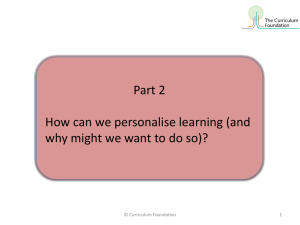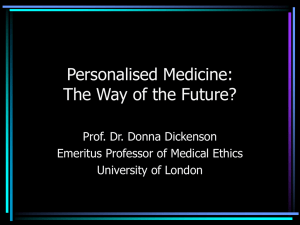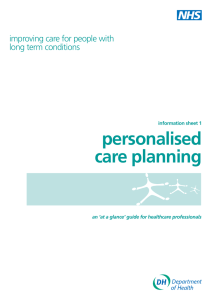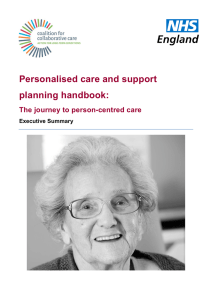Personalised Learning File
advertisement
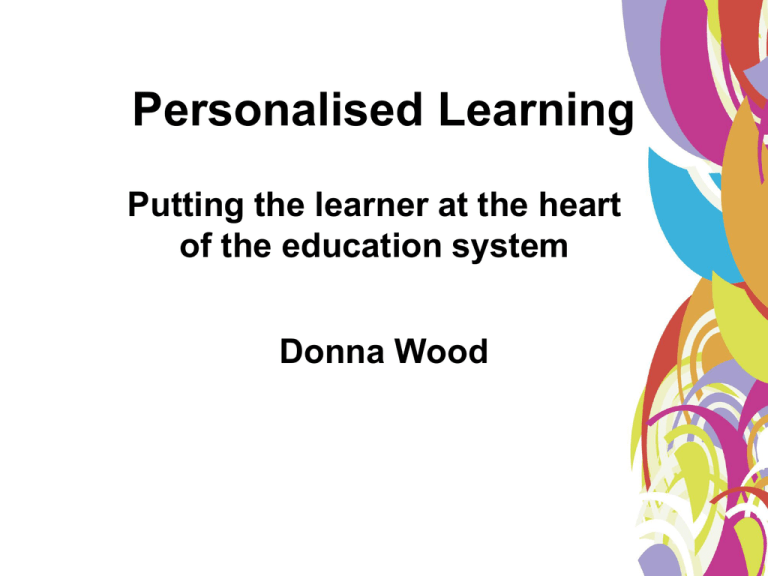
Personalised Learning Putting the learner at the heart of the education system Donna Wood What is fundamentally different in personalised learning is the transfer of power and responsibility for learning away from the teacher towards the learner. ‘Moving from Satisfactory to Superb’ • Responding to the needs of the whole person • Creating an ethos of seeking and responding to the views of the learner • Raising the ambitions of all learners • Supporting every learner to become expert • Encouraging individuals to take responsibility What information do I need about the learner? • • • • their individual needs their talents their preferred learning styles their personal interests. Responding effectively to this information is the key to giving learners the opportunity to achieve to their full potential. How am I going to use the information? • Setting personal targets • regularly monitoring learners’ performance against these targets • trying to match learning styles to each individual need and personal pace of learning ………………………………………are all part of personalised learning Personalised Learning is about.. • focusing on personalising teaching to meet the aptitudes and interests of the learner • responding to the different ways learners achieve their best • identifying individual needs and preferred learning styles • undertaking assessment for learning • tailoring education in a way that bests ensures every learner achieves the highest possible standard Personalised Learning is about.. • encouraging learners to engage in critical self-assessment • setting individual learning targets and regularly reviewing progress • providing structured feedback and teaching learners how to use it to improve their work • raising standards of learning and teaching Personalised Learning is not about.. • • • • expecting learners to learn on their own abandoning the Curriculum allowing learners to do their own thing permitting learners to coast at their own pace. Activity 1 • What do I currently do that could be considered Personalised Learning? • How could I improve current practice to reflect a Personalised Learning approach? Activity 2 • Skills I need • analysing and using data, with a specific focus on assessment for learning • understanding how we learn and develop • engaging pupils as active participants in learning • Skills I have • • • • Five key elements of personalised learning 1. Assessment for Learning 2. Effective Teaching and Learning strategies 3. Curriculum Entitlement and Choice 4. School/College Organisation 5. Partnership Activity 3 • In mixed curriculum groups, agree 5 examples of how you would provide evidence of a personalised learning approach in your lessons that would be identifiable through lesson observation • • • • • Activity 4 • VIDEO 1 • In this programme, we see advanced skills teacher Sue Prichard teaching two Year 10 German classes using personalised learning techniques. • In the first lesson we see her differentiate her lesson to suit multiple ability levels. She hands out more advanced tasks to the more able students while continuing to support the lower-ability pupils. She also uses data collected from a learning skills questionnaire to give her lessons the right mix of auditory, kinaesthetic and visual material designed to suit her pupils. What is Personalised Learning? • In the second lesson, we see Sue provide a personalised learning experience for Victor, a boy who has been previously excluded. We see how Sue considers about his learning needs and then designs customised tasks and activities so he can function well with the rest of the class. • VIDEO 1.wmv




